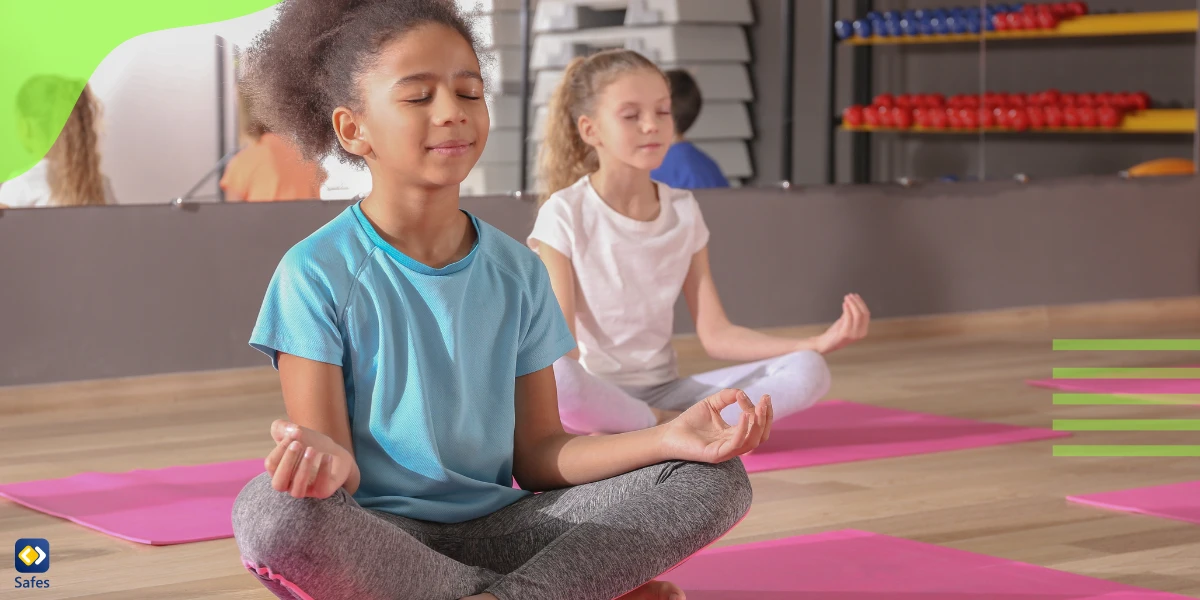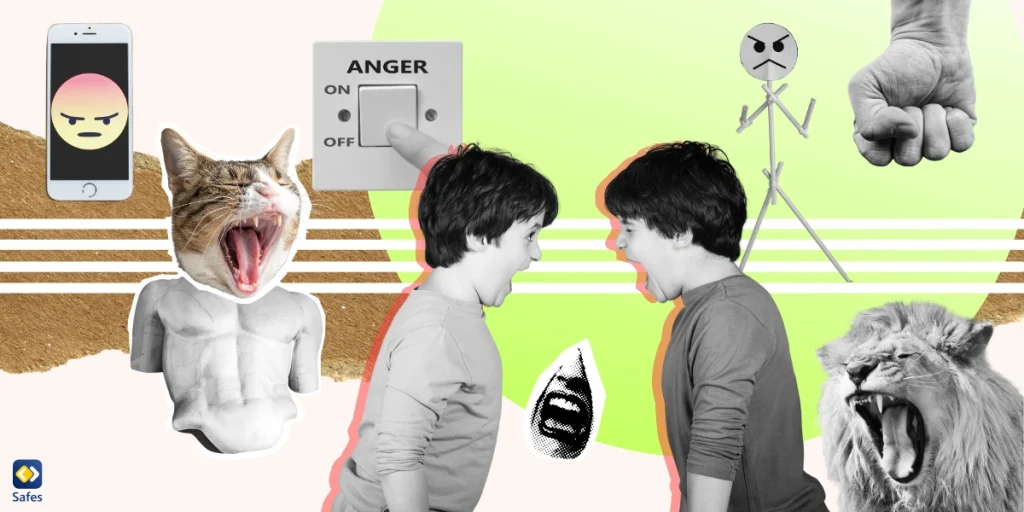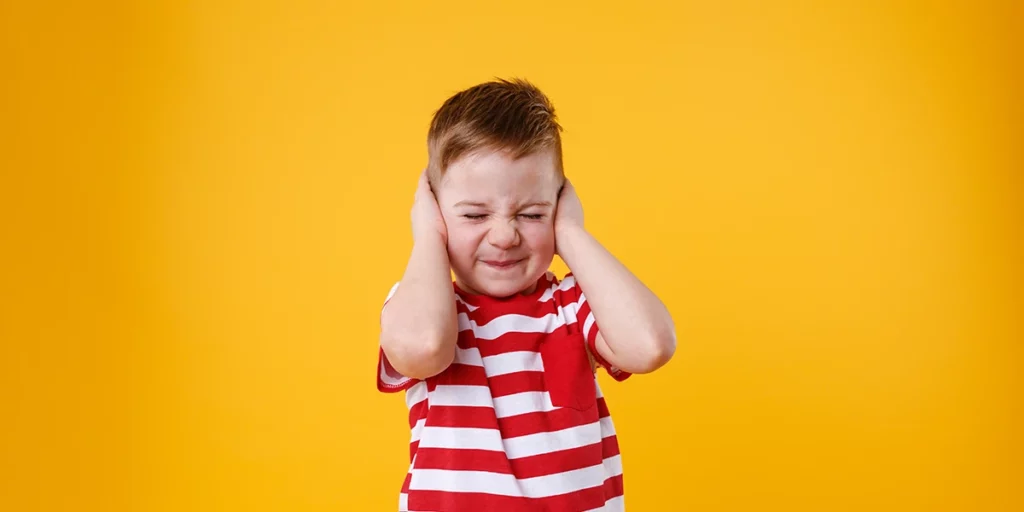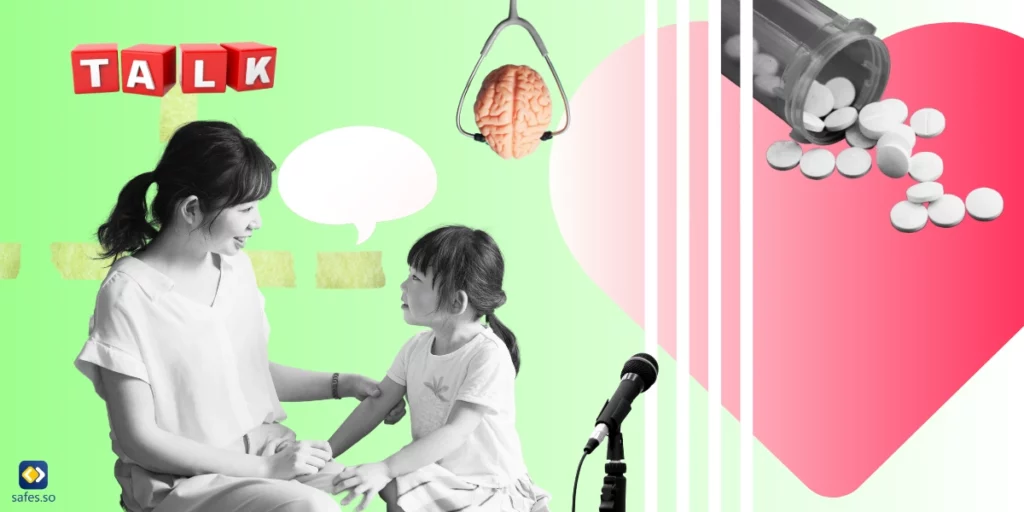Anger is a natural emotion that all children experience, but it’s how they handle it that truly matters. In today’s blog, we’ll dive deep into this crucial topic. We’ll explore why anger management for children is so important and how parents and teachers can play a vital role in teaching children the necessary skills to navigate their emotions.
Why Do Children Become Angry?
Anger is a natural and normal human emotion that everyone experiences from time to time, including children. While teaching children how to manage their anger is essential, normalizing anger as a valid emotion is equally crucial. Children need to understand that feeling angry is normal and that it is how they respond to that anger that matters. By normalizing anger, we create an environment where children feel safe expressing their emotions without fear of judgment or punishment. This helps them develop healthy emotional intelligence and coping mechanisms for dealing with anger.
Children, like adults, have various triggers that can lead to anger. These triggers can be external, such as conflicts with siblings or friends, or internal, like feeling misunderstood or overwhelmed. Recognizing these triggers is crucial in helping children manage their anger effectively. Additionally, children may exhibit certain signs when experiencing anger, such as increased heart rate, clenched fists, or changes in facial expression. Understanding these signs can provide valuable insights into a child’s emotional state and enable timely intervention.
Uncontrolled anger can profoundly impact a child’s behavior and relationships. It can lead to aggressive outbursts, defiance, and difficulty maintaining healthy connections with peers and family members. Unmanaged anger can also negatively affect a child’s self-esteem and overall well-being. By teaching children how to control and express their anger appropriately, we empower them to navigate challenging emotions and build healthier relationships.

Teaching Anger Management Skills
Teaching anger management skills to children is crucial for their emotional well-being. By equipping them with practical strategies, we can empower them to navigate their anger in a healthy and constructive manner.
Model healthy anger expression and self-regulation: Show children how to express anger in a calm and respectful manner and teach them techniques like deep breathing and taking a break to self-regulate.
Effective communication strategies during conflicts: Teach children to use “I” statements, active listening, and assertiveness to express their feelings and needs during conflicts, promoting understanding and resolution.
Teaching problem-solving and conflict-resolution skills: Help children identify the root causes of their anger and guide them in finding constructive solutions to conflicts, fostering problem-solving and conflict-resolution skills.
Encouraging emotional awareness and self-reflection: Teach children to recognize and label their emotions, promote self-awareness, and encourage them to reflect on their feelings and the triggers that lead to anger.
Promoting relaxation techniques and stress management: Introduce children to relaxation techniques such as deep breathing, mindfulness exercises, and engaging in activities they enjoy to help them manage stress and reduce anger levels.
Anger Management Activities and Techniques
Anger management activities and techniques for children play a crucial role in helping them develop healthy coping mechanisms and emotional regulation skills. Children can learn to recognize and manage their anger constructively by engaging in these activities. Let’s explore some effective anger management activities and techniques for children:
Deep breathing exercises and mindfulness practices: Deep breathing exercises and mindfulness practices are excellent tools for helping children calm their minds and bodies. Encouraging children to take slow, deep breaths while focusing on their breaths can help them regulate their emotions and reduce feelings of anger.
Use of visual aids and social stories: Visual aids and social stories can be powerful tools in teaching children about anger management. By using visual aids such as charts, pictures, or drawings, children can better understand and identify their anger triggers and learn appropriate ways to respond. Social stories, which are short narratives that illustrate specific situations and appropriate responses, can also provide guidance and teach children valuable anger management strategies.
Role-playing and practicing assertiveness skills: Role-playing allows children to practice assertiveness skills and learn effective communication strategies to express their anger respectfully. Through role-playing, children can learn how to assert their needs and desires while considering the feelings and perspectives of others.
Art therapy and expressive activities: Art therapy and expressive activities provide children with a creative outlet to express their emotions and channel their anger in constructive ways. Children can explore their feelings through activities such as drawing, painting, or sculpting and find alternative ways to cope with anger.
Incorporating physical activities and sports for anger release: Based on research by Asian Nursing Research (Relationships between Exercise Behavior and Anger Control of Hospital Nurses), doing physical activities and sports can help children release unreleased anger and energy in a positive and controlled manner. Participating in activities such as running, dancing, or playing sports not only promotes physical health but also serves as a healthy outlet for children to manage their anger.

How Can Safes Help?
The Safes parental control app can be a helpful tool in teaching anger management skills to children. With its flexible features and user-friendly interface, Safes allows parents to monitor and manage their child’s digital activities.
Through the app, you can set healthy screen time limits for your child, ensuring that they have a balanced routine that includes time for other activities and social interactions. By promoting a healthy balance between screen time and other activities, Safes can help prevent excessive exposure to anger-inducing content or situations.
Additionally, Safes allows you to monitor your child’s online interactions, providing insights into any potential triggers or situations that may contribute to anger. By being aware of these triggers, you can have open and constructive conversations with your child, helping them understand and manage their emotions healthily.
Furthermore, Safes offers features like content filtering and blocking, which can be used to prevent access to harmful or provocative content that may fuel anger. By creating a safe digital environment, you can minimize the chances of your child being exposed to content that may trigger anger or frustration.
Safes is available on Android, iOS, Windows, and Mac platforms. Learn how to protect your child on each of these platforms using Safes with the links down below:
- Windows parental controls
- Macbook parental controls
- Parental controls on Android
- iPhone parental controls
Explore how Safes can assist you in managing your child’s digital habits—consider starting a 14-day free trial today, with no payment details required!
Seeking Professional Support for Anger Management
Recognizing when to seek professional help for anger management in children is an important step in ensuring their well-being. As parents or caregivers, it’s essential to be aware of signs that indicate the need for additional support. These signs may include frequent and intense anger outbursts, difficulty in managing anger in various settings, and a negative impact on relationships with peers and family members.
Fortunately, numerous resources are available to assist in addressing anger management in children. Anger management classes designed for children can provide valuable tools and techniques to help them effectively understand and regulate their emotions. These classes often incorporate interactive activities, role-playing, and practical exercises to promote healthy anger expression and coping strategies.
Collaborating with professionals such as therapists, counselors, or school psychologists can also be immensely beneficial. These professionals have child development and behavior expertise and can provide personalized strategies tailored to your child’s specific needs. They can guide you in implementing effective anger management techniques and offer support and guidance throughout the process.
Additionally, schools may offer counseling services or have dedicated school psychologists who can work closely with your child. They can provide individualized support, monitor progress, and collaborate with teachers and parents to create a consistent approach to anger management.
Remember, seeking professional help doesn’t mean you’ve failed as a parent. It’s a proactive and responsible step toward helping your child develop healthy ways to manage their anger. By utilizing available resources and collaborating with professionals, you can create an environment that supports your child’s emotional well-being.

Collaborating with Schools and Educators
Promoting anger management programs in schools is crucial for creating supportive and inclusive classroom environments. By collaborating with teachers, we can reinforce anger management skills and provide valuable tools for children.
One practical approach is to introduce anger management classes for children. These classes can teach them how to recognize and understand their anger, as well as provide practical strategies for managing it. By normalizing anger as a natural emotion, we can help children develop healthier ways of expressing and dealing with their feelings.
To create a supportive classroom environment, fostering open dialogue about anger is important. Teachers can facilitate discussions where students can share their experiences and emotions. This not only helps children feel heard but also allows them to learn from one another and realize that they are not alone in their struggles.
Collaborating with teachers is critical to reinforcing anger management skills. Teachers can incorporate anger management techniques into daily classroom routines, such as using calming strategies like deep breathing or taking a break when emotions run high. They can also encourage effective communication and problem-solving skills, which are essential for resolving conflicts and managing anger in a healthy way.
Moreover, using visual aids like anger meters or emotion charts can help children identify and regulate their anger levels. Role-playing activities can also be beneficial, allowing children to practice assertiveness and conflict resolution in a safe and controlled environment.
Additionally, incorporating art therapy or physical activities into the curriculum can provide alternative outlets for releasing anger and stress. Creative expression or physical exercises can help children positively channel their emotions.
Anger Management for Children: Conclusion
Teaching anger management to children is crucial for their emotional well-being and overall development. By normalizing anger as a natural emotion and equipping them with the necessary skills, parents and teachers can help children navigate their anger in healthy and constructive ways. Recognizing triggers, promoting effective communication, problem-solving, conflict resolution skills, and encouraging emotional awareness are all critical components in teaching anger management. It is also essential to emphasize relaxation techniques and stress management to help children cope with anger.
Seeking professional help and utilizing resources like the Safes parental control app can provide additional support. By implementing anger management programs in schools and creating supportive environments, we can empower children to manage their anger effectively and build positive relationships. Together, let’s ensure that children have the tools they need to handle their emotions and thrive emotionally.




